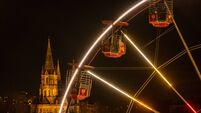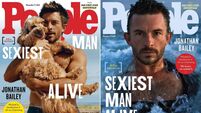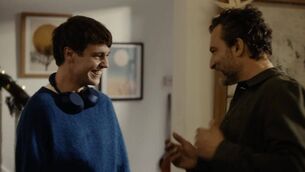An unusual trek around Ireland, a century ago - from hospitable Cork to magnificent Glengarriff
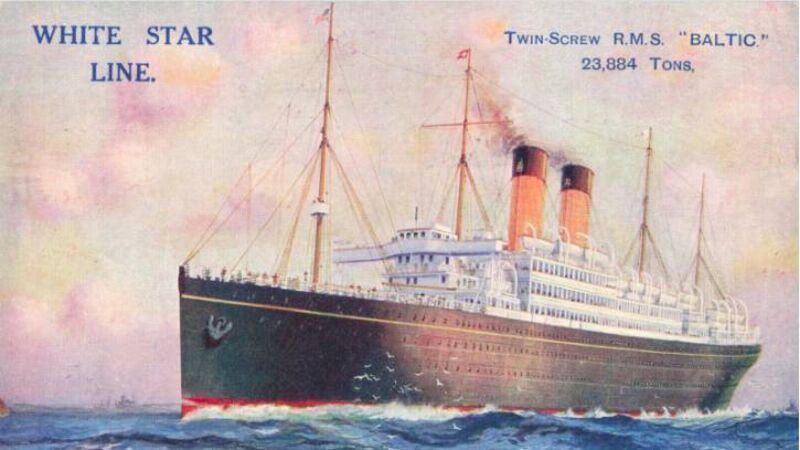
Harold Speakman arrives in Cobh on RMS 'Baltic' on 1 June 1924, depicted here on a postcard.
A hundred years ago today, an American artist was in Cork city, trying to buy a donkey with enough oomph to get him round the whole country.
Without knowing a single person there, 36-year-old artist Harold Speakman spent summer 1924 travelling around Ireland – not by train, motorcar or bicycle, but by donkey and cart. That way he could see more, and get “just as near as I can to the heart of everyday people”.
On Saturday 1 June 1924, Speakman arrived in Cobh from New York aboard the steamship ‘Baltic’. Considered “plain for an American”, he was certainly a witty man. Reaching Cork, he quipped: “it is called such because it floats...” Depositing his bags at the Windsor Hotel, MacCurtain Street, he headed for an “out-of-the-way public house”, where he slumped over the bar in “the approved Corkonian manner”, and ignored Prohibition Laws back home by ordering a drink. When he raised the subject of donkeys, a local horse-handler smiled and told him that even a good one would only go at walking speed. Better get a pony.
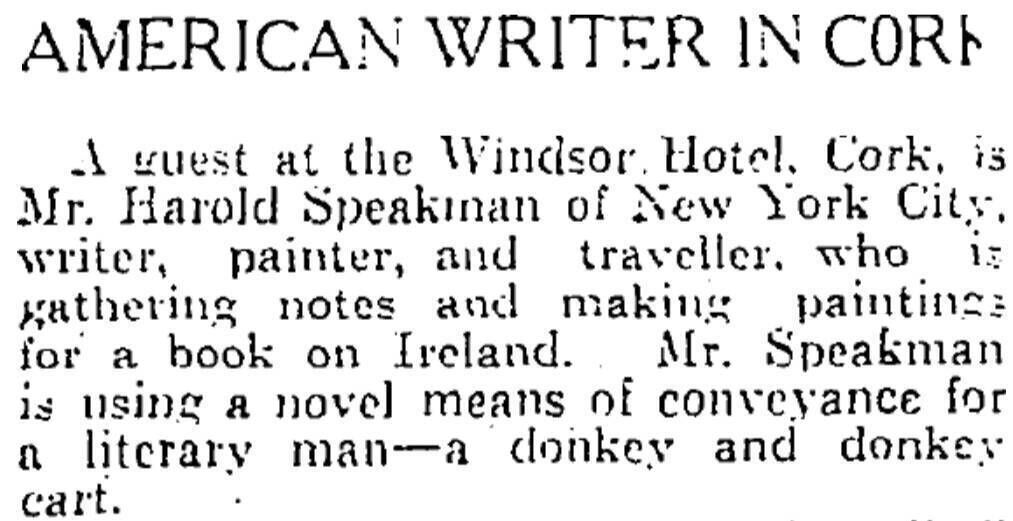
But Sister Benedict at Presentation Convent convinced him to buy a donkey. “Thousands” in Ireland use them, she said. First, he took the steam tram to Blarney Castle, where he bumped his nose on the Stone before giving it a “passionate” kiss – all totally unnecessary since he already had the ‘gift of the gab’.
Next morning, he visited the Echo office to place a wanted advert for a donkey and cart to carry clothes, painting gear, and oats. Within half an hour of the paper hitting the streets, he’d had several offers. His first purchase, in Gullion’s Cross, was meant to “go like fire” but looked like it had been constructed from “old broomsticks and scrubbing brushes”. Speakman bought another for £2 from some Dublin Hill tinkers, who assured him it would “make Belfast sitting down”. He named the donkey “Herself”.
They set off to circle Ireland, with a “flexible itinerary”.
The journey began badly. Even before reaching Coachford, only 18 miles away, Speakman recorded “an endless series of starts, stops… and episodes with little pieces of string”. What’s more, rain reduced the donkey’s speed by “at least forty per cent”. It was a foretaste of the “wettest Irish summer in nearly fifty years”: the country was like “drenched blotting paper”, he commented, a place to eat “a disconsolate egg under a dripping tree”. By the end of his travels, he will have noted “rain” 26 times.
After many “Irish miles” and “Irish minutes”, they arrived at the small “jewel-like” lake at Gougane Barra, glistening before high mountains, and bedecked with purple rhododendrons. Leaving the donkey on the island, Speakman slept at Cronin’s Hotel. Next morning, having hunted high and low, he discovered Herself in the chapel, “nibbling a little timidly” at the altar cloth. Reaching “magnificent” Glengarriff, he lunched at the Eccles Hotel, and in its famous library discussed with a gentleman sporting “excitable white hair” the dangers of underground railways, newfangled tinned food, and overeating.
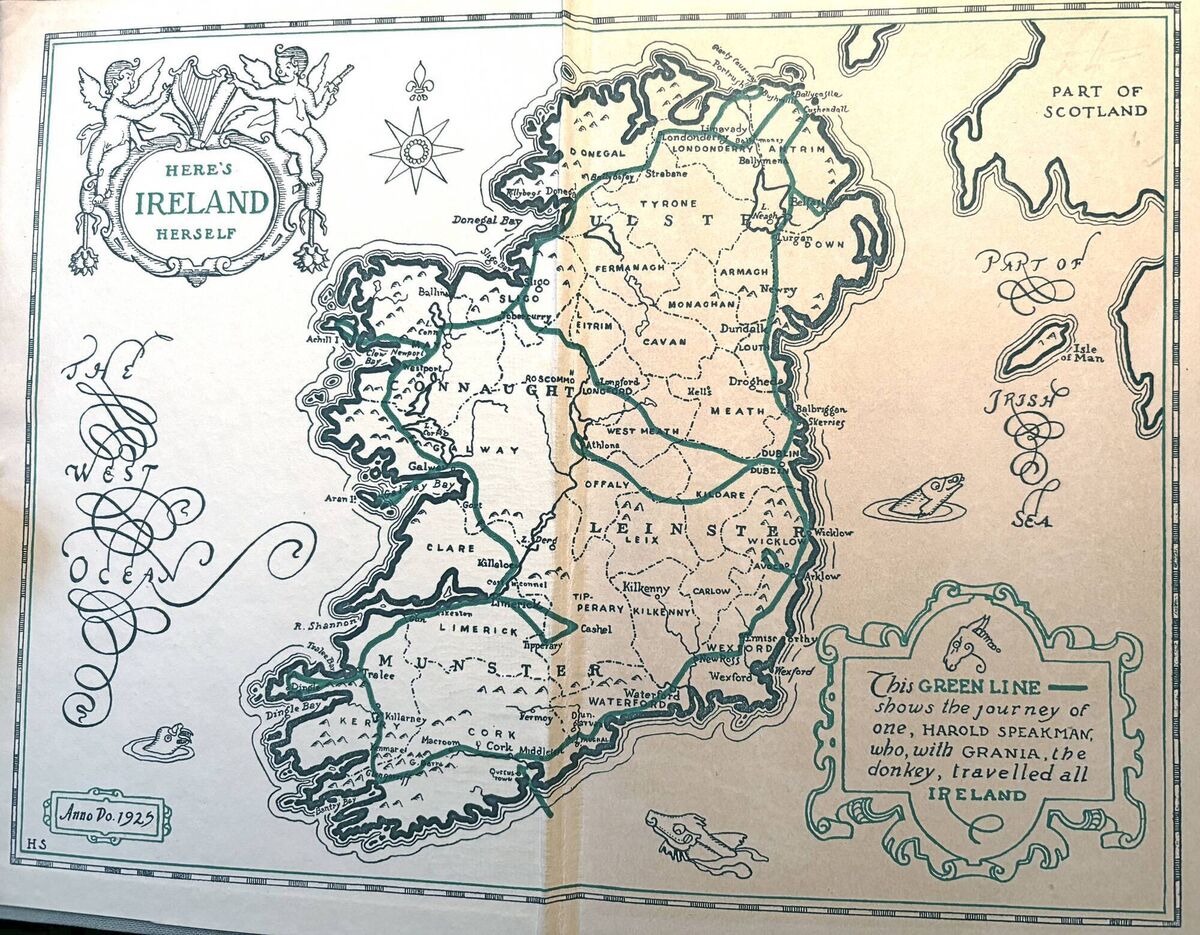
The American took the “long trip” through the Lakes and Gap of Dunloe to Killarney, where he sampled a glass of poteen. “I think it is worthwhile going to Killarney just to see Muckross Abbey…”, he recommended.
At Kenmare, “not seeing a good hotel through the rain, I chose a bad one. So bad, in fact, that in the morning… I waited in the coffee room until nearly ten without so much as a whiff of bacon”. Speakman enjoyed his food. While staying at Berner’s Hotel, Dingle, he noted a “galaxy of grunters” in the market, positively “bursting with breakfast potentialities”.
Spoilt by Irish hospitality – umpteen cups of tea, even the free loan of a car – Speakman was shocked to spot “an obviously English family” drive past. “I nodded to them in a friendly way… but they stared back frigidly and went on with frozen backbones”.
A visit to the ruins of Cashel was a must. Travelling from Limerick to Tipperary, he sat in “the most voluptuous, red plush third-class railway coach to be found in Europe”. And there was a further delight on board: the ‘Sweet Singer of the Great Southern’, strumming a banjo and singing about the old home in County Down – apparently, she performed on every train!
A woman of different class, Lady Augusta Gregory of Coole Park, convinced him to rename his donkey ‘Grania’, after the daughter of High King Cormac MacArt, who walked all Ireland with Diarmuid in the old Irish legend.
As they trudged north, he witnessed a hydro-electric project at Shannon; “thousands” of men and women – many barefoot – climbing the holy mountain of St Patrick, Co. Mayo, on their annual pilgrimage; and a stationary bus at Bundoran, Sligo, equipped with headphones at every seat to hear new ‘wireless’ concerts broadcast from Belfast and Dublin.
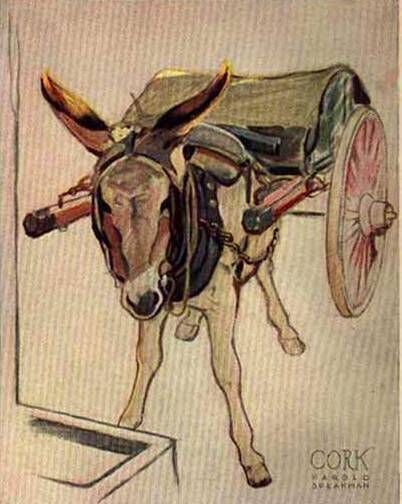
Speakman reached Donegal. Of all the western bays he’d seen – Bantry, Dingle, Tralee, Clare, and Sligo – this, for him, was by far the most beautiful.
In Donegal town he tried meeting Father Charles O'Donnell, who wrote for American magazines. After a long search he finally came across a man with this name, but it turned out to be someone else!
After 60 nights on the road in the fledgling Free State, Harold and Grania reached the border with the six counties. Would they be allowed across? A man emerged from a little shack and called out: “Are you empty?” Speakman replied: “Yes, I am”. And that was that.
Arriving in “pleasant but gloomy” Derry on 12 August, man and beast were in time to bring up the rear of the Apprentice Boys’ Parade.
The electric railway carried him to The Giant's Causeway, where he spent hours contemplating the “vast pentagonal columns”, which appeared to him like “squeezed cigarettes”.
A less welcome surprise awaited him at the Whiteside Hotel in Ballymena, where instead of leaving shoes outside their rooms for polishing, guests were handed a pair of used slippers, and had their shoes returned when they departed.
Although he found Belfast “grave and dignified”, he liked Dublin immediately, especially its “friendly and good-natured intimacy”. He met Countess Markievicz (who gave him a Russian cigarette), watched a performance at the Abbey Theatre, and bashed his head again, this time on a lamppost! In a cinema he encountered a young woman called Peggy, with “smiling eyes” and “very white teeth”. They had tea together in Clery’s restaurant, and went back to her place by the sea.
From there, Speakman returned to Cork – whose citizens embodied “the very essence of the hospitality of southern Ireland”. He asked the Examiner reporter if he knew anyone who’d take care of Grania, for she was “entitled to a rest”.
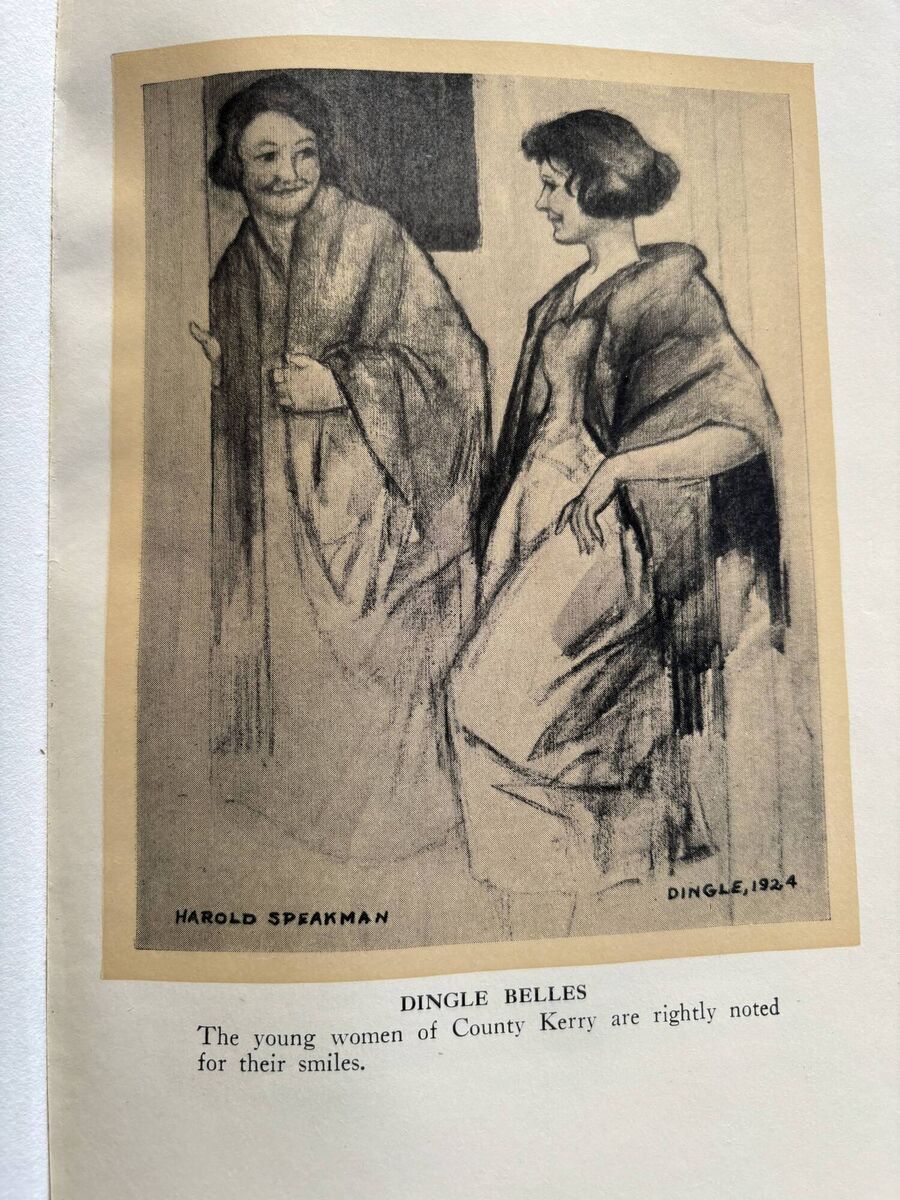
On 28 September, four full months after his arrival, Harold Speakman left “good-natured, laughter-loving and whimsical” Ireland, and returned to New York. He reckoned he’d particularly miss the girls in Kerry, with “the finest smile” in the whole country, and the “strange little men... who spring up from nowhere, help one, and disappear with a smile”.
That autumn he began developing his notes into a delightful 353-page tome, Here's Ireland (1926), illustrated with twelve of his oil paintings – all made “between showers”. Opposite the title page, a vivid watercolor of his “plodding helpmate” assumes pride of place.




